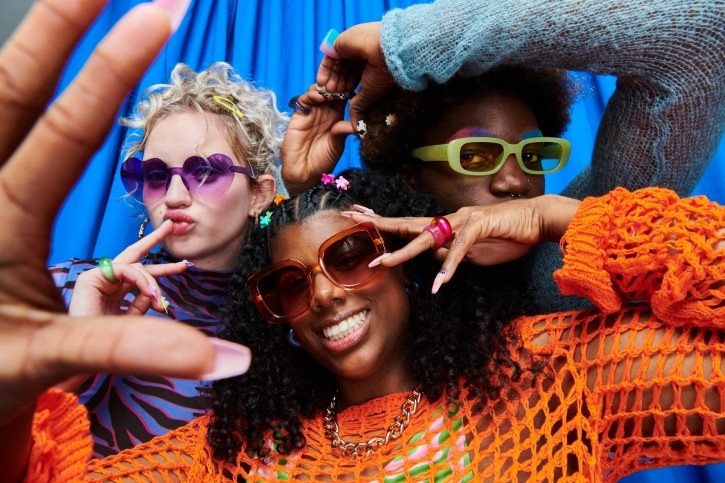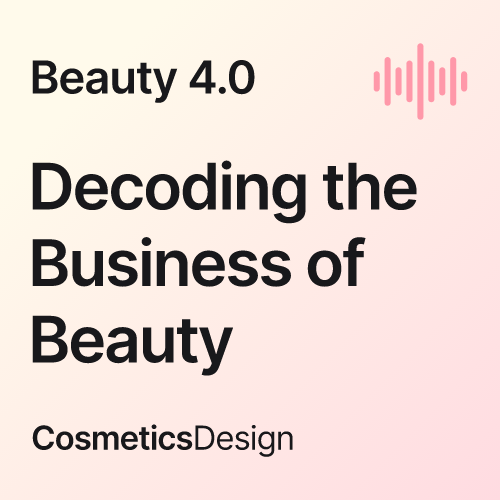Kantar research shows how Gen Z’s personal care habits are maturing

The research shows that the group, which includes people aged 13 through 24, shows some similar attitudes. Dividing them up into teens—aged 12 to 17—and younger adults—aged 18 to 24—underlines some distinctly different consumer habits, particularly when it comes to Gen Z females.
Kantar’s research shows that while teenagers live at home, they tend to maintain consistent and structured personal care regimens that fit around school hours. However, these regimens can shift dramatically as they turn 18 and start to purchase their own products.
Older Gen Z consumers buy their products and simplify their routines
Underscoring this, the company’s Worldpanel consumer data reveals that in the US, 72% of 18- to 24-year-olds have a personal care occasion that features an item they have brought, compared to only 41% of teens—statistics that demonstrate how growing financial independence marks the fact that older Gen Z consumers are making their own personal care purchasing decisions.
The data also reveals that the 18 to 24 age group showed a change in usage patterns as routines became more streamlined and less consistent, with product use occurring throughout the day, as opposed to outside school hours. This also underpins the fact that routines simplify as individuals in Gen Z enter their early adult years
Beth Jackson, Consumer Insight Director- Global Usage Care at Kantar, believes that these more straightforward habits for younger adults could spell many opportunities for brands, primarily because this simplification implies that the right products might not be available for older Gen Z consumers.
More straightforward routines of older Gen Z’s could spell opportunities
Kantar’s data shows that older Gen Z consumers drop eight personal care occasions in the average week, which indicates the need for convenience and cost-effectiveness, underscoring the preference for multifunctional products.
However, this simplification may also point to gaps. Kantar’s data shows that, while 71% of 18- —to 24-year-olds report difficulty managing hair conditions such as frizz, they are less likely to use hair styling products compared to their younger Z Gen counterparts.
“I think it’s more about focusing on those needs, how they can be met, and exactly what the gaps are,” said Jackson, who believes that brands need to ask the right questions to fill these gaps in product availability. “Looking at examples, in the case of hair styling, are products available on the market not effective? Are these types of products ‘too much of an effort, and could a multifunctional/ time-saving product meet their needs? Or is it a price barrier?”
Brands need to fill in the gaps in skin care offerings
The data also points to opportunities for older and younger Gen Z consumers. While older Gen Z consumers generally show lower engagement in personal care, Kantar’s data reveals increased engagement in facial skin care, a trend that suggests a greater emphasis on appearance and an area that brands would do well to explore further.
The research also points to the role that social media is playing in helping younger Gen Z consumers engage with skin care. This is particularly true of teenagers, who have generally reported lower skin care concern rates than other age groups; the latest Worldpanel data reveals that teenagers with skin care concerns are 1.6 times more likely to use a skin care product in the average week.
The data about teenage skin care indicates room for younger Gen Z consumers to ‘catch up’ with their older counterparts. While education is crucial to cultivating and meeting those specific needs, Kantar’s research also emphasizes that engaging these consumers early is essential to forming habits that determine brand preferences.
Gen Z males are generally apathetic, but opportunities still exist
While much of Kantar’s data is swayed to opportunities for female personal care occasions, Jackson believes that Gen Z males are still showing signs of apathy towards personal care product engagement as a whole, something they seem to share with previous male generations. Jackson also points out that the rise of unisex brands like CeraVe and Cetaphil is mostly driven by Gen Z females.
“Gen Z males really just use the same brands as the average man. Nivea remains big with men in general, which we know is driven by Nivea for Men,” said Jackson.
“Gen Z males are showing a bit more relative engagement with categories not traditionally ‘male’ oriented, like skin care and hair styling, but actually their disengagement with classic personal care categories and traditional ‘male’ categories skews them to be less engaged overall.”
![HUL's Stratos technology reduces palm oil in soap by 25% and claims to have superior functional benefits to the skin barrier, fragrance delivery, and more. [HUL]](/var/wrbm_gb_food_pharma/storage/images/_aliases/wrbm_medium/publications/cosmetics/cosmeticsdesign-asia.com/headlines/brand-innovation/hindustan-unilever-s-new-soap-technology-brings-dramatic-superiority-to-lux-lifebuoy/17623927-1-eng-GB/Hindustan-Unilever-s-new-soap-technology-brings-dramatic-superiority-to-Lux-Lifebuoy.png)





![Recent product news from Essentials, Justhuman, Camino Rose, matsukiyo and more. [Camino Rose]](/var/wrbm_gb_food_pharma/storage/images/_aliases/wrbm_tiny/publications/cosmetics/cosmeticsdesign-asia.com/article/2024/09/06/product-profiles-latest-news-on-the-hottest-beauty-products-in-apac/17722207-1-eng-GB/Product-profiles-Latest-news-on-the-hottest-beauty-products-in-APAC.png)
![Justhuman has launched its first skin care product. [Justhuman]](/var/wrbm_gb_food_pharma/storage/images/_aliases/wrbm_tiny/publications/cosmetics/cosmeticsdesign-asia.com/headlines/brand-innovation/justhuman-expands-neurocosmetic-portfolio-with-first-skin-care-launch/17662516-1-eng-GB/Justhuman-expands-neurocosmetic-portfolio-with-first-skin-care-launch.jpg)

![Able C&C is strengthening its international presence by expanding its footprint in the Middle East. [Missha]](/var/wrbm_gb_food_pharma/storage/images/_aliases/wrbm_tiny/publications/cosmetics/cosmeticsdesign-asia.com/headlines/business-financial/able-c-c-furthers-global-acceleration-with-middle-east-expansion/17704777-1-eng-GB/Able-C-C-furthers-global-acceleration-with-Middle-East-expansion.jpg)
![Our round-up of the beauty brands in Asia Pacific, featuring news and updates from Kosé, Clinique, Coty and more. [Kose]](/var/wrbm_gb_food_pharma/storage/images/_aliases/wrbm_tiny/publications/cosmetics/cosmeticsdesign-asia.com/headlines/brand-innovation/kose-clinique-coty-and-more-in-our-brand-update/17705038-1-eng-GB/Kose-Clinique-Coty-and-more-in-our-brand-update.jpg)

![Hera is accelerating its expansion in Thailand through online and offline channels. [Hera]](/var/wrbm_gb_food_pharma/storage/images/_aliases/wrbm_tiny/publications/cosmetics/cosmeticsdesign-asia.com/article/2024/09/03/hera-outlines-thailand-expansion-plans-with-sephora-eveandboy-shopee-tiktok/17687410-1-eng-GB/Hera-outlines-Thailand-expansion-plans-with-Sephora-EVEANDBOY-Shopee-TikTok.jpg)



